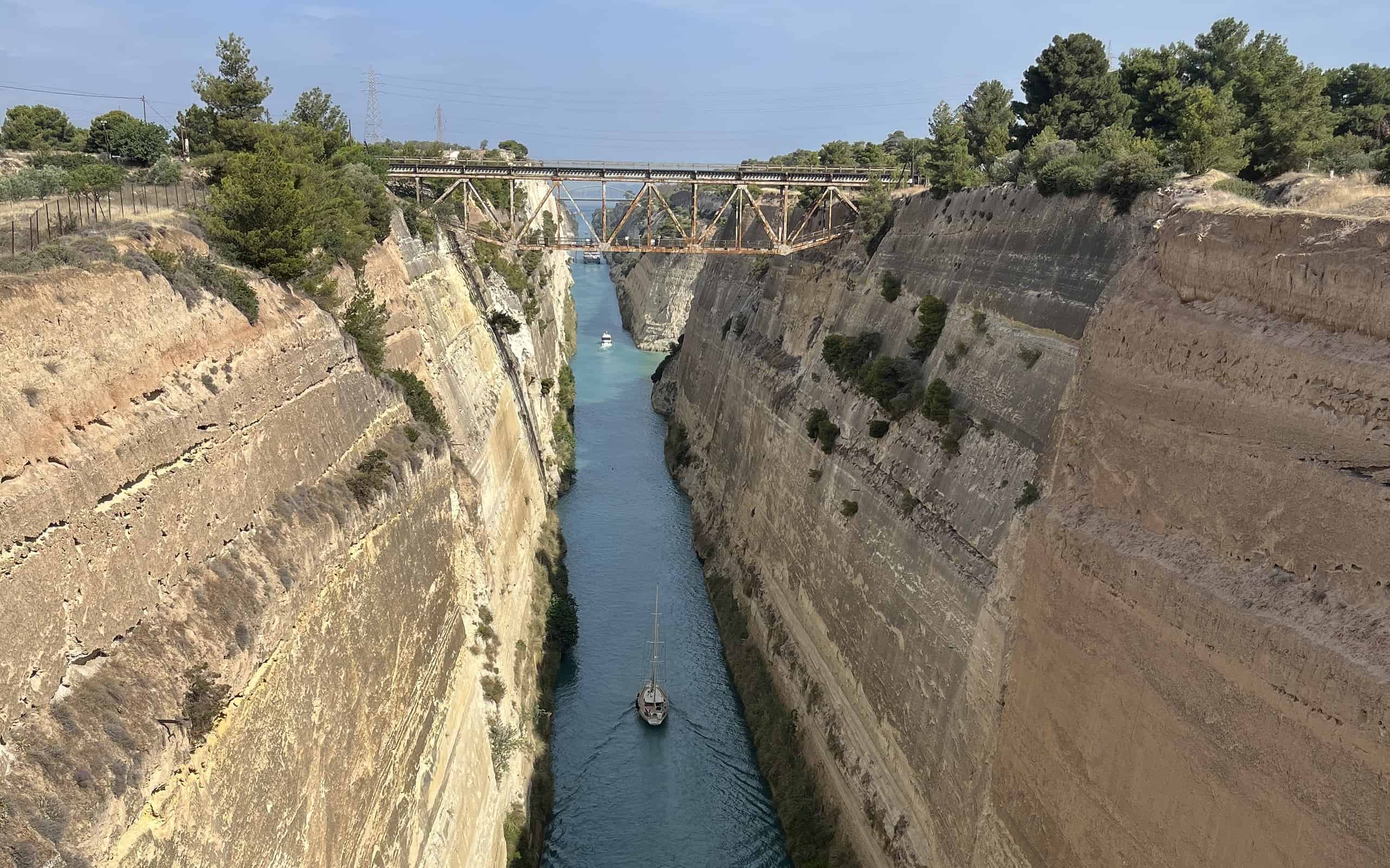There are man-made canals across the world created to shorten routes for ships. Many are well-known, like the Suez, Volga-Don, Panama, and White Sea-Baltic Sea Canal. They offer alternative transportation options across essential global seawater networks. As a result, ships can move goods or passengers in a shorter amount of time. The Corinth Canal is one of the oldest man-made canals and an important route connecting the Saronic Gulf Gulf of Corinth in the Greek archipelago. But how deep is the Corinth Canal, and is it easy for ships to navigate?
Where is the Corinth Canal?
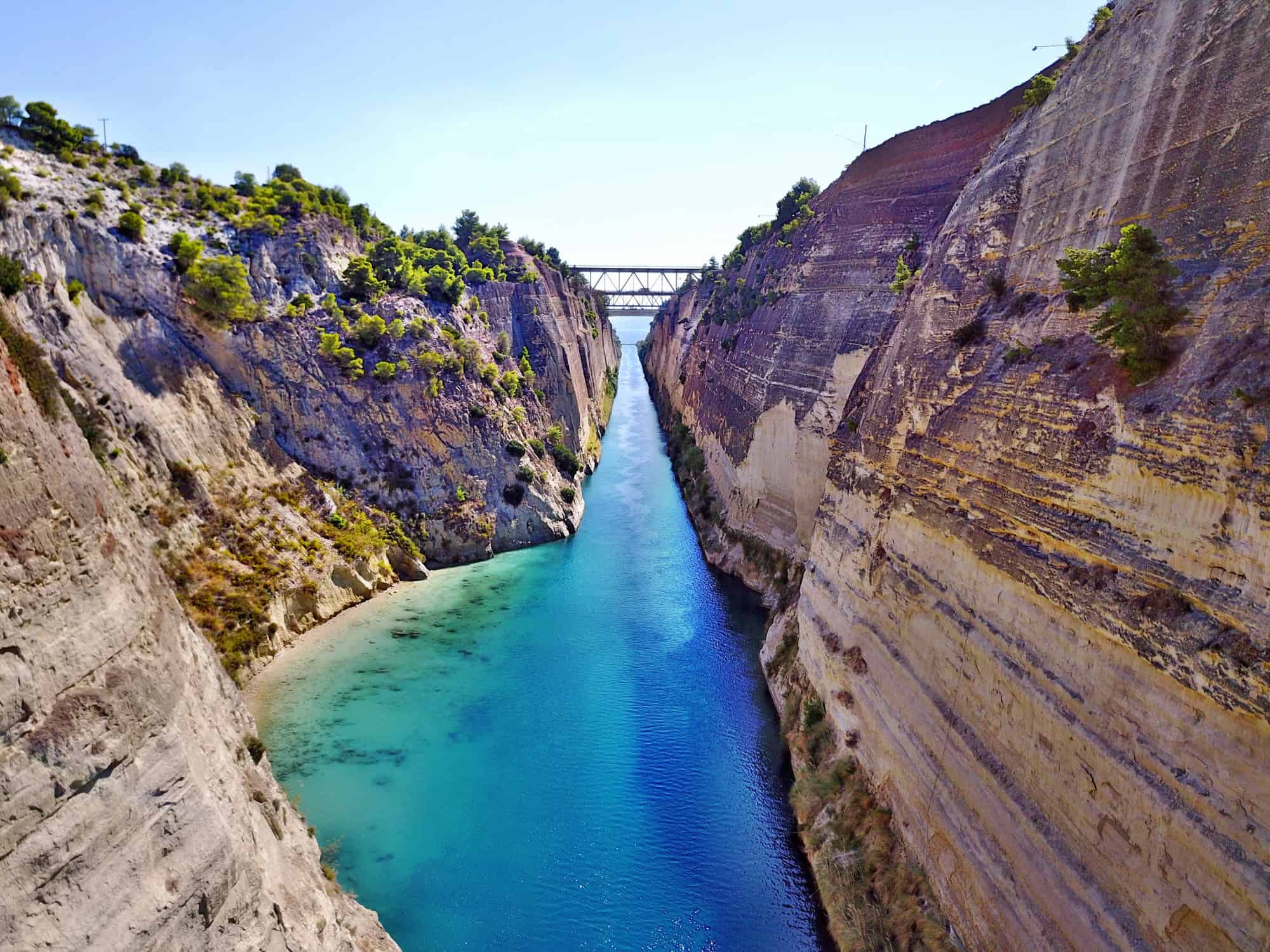
The Corinth Canal saves ships from traveling the 300-mile journey around the Cape, meaning they reach their destinations in the east much faster, and their trip is much safer.
©F4-Bilder.de/iStock via Getty Images
You can find the Corinth Canal in the Isthmus of Corinth, a 3.7-mile wide piece of land that connects Greece’s mainland with the Peloponnesian peninsula. It separates both Greek regions because the canal crosses the Isthmus from side to side. This canal is essential for Greece’s economy because it provides direct transit between the Gulf of Corinth and the Aegean Sea.
What is the Corinth Canal?
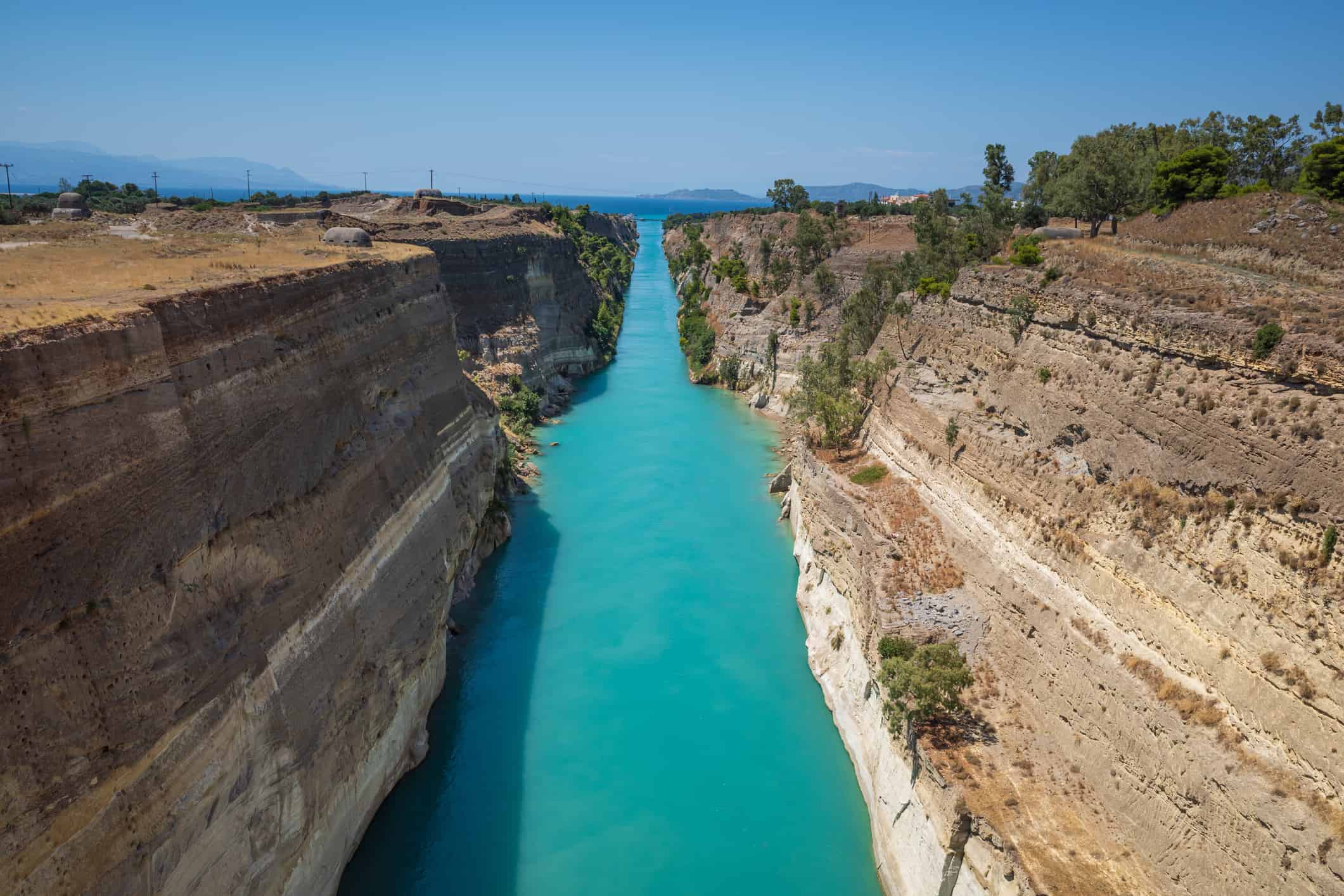
Today, the Corinth Canal is a popular tourist destination and Greece’s second most visited destination.
©Oleh Petrenko/iStock via Getty Images
The Corinth Canal saves ships from traveling the 300-mile journey around the Cape, meaning they reach their destinations in the east much faster, and their trip is much safer. Today, it is a popular tourist destination and Greece’s second most visited destination.
How Deep is the Corinth Canal?
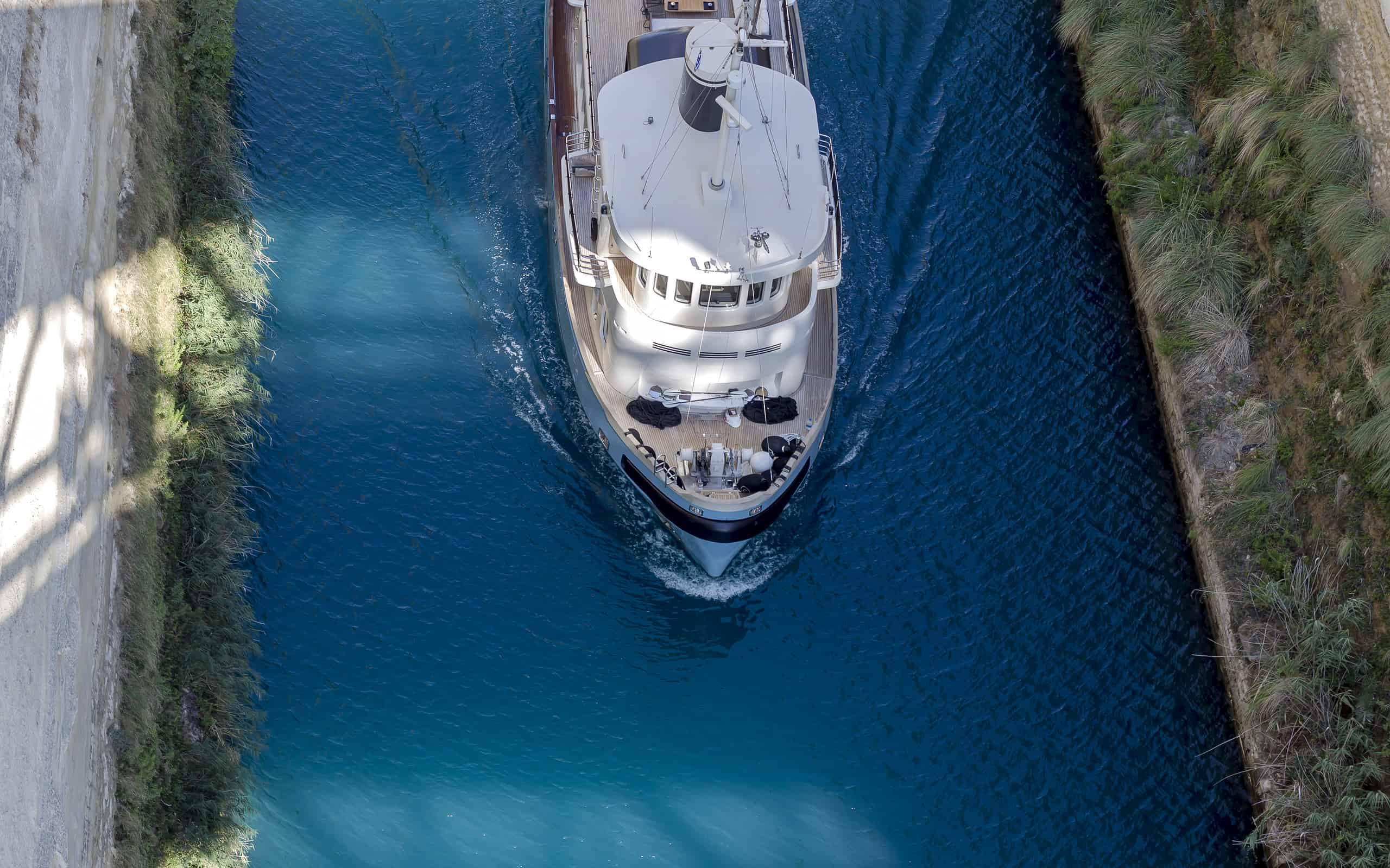
How deep is the Corinth Canal? This man-made waterway is the world’s deepest canal, with a depth of 26 feet.
©TETYANA LYAPI/iStock via Getty Images
While this canal is a popular transit route, it is tough to navigate because it is so narrow. But how deep is the Corinth Canal? This man-made waterway is the world’s deepest canal, with a depth of 26 feet.
How Was the Corinth Canal Formed?
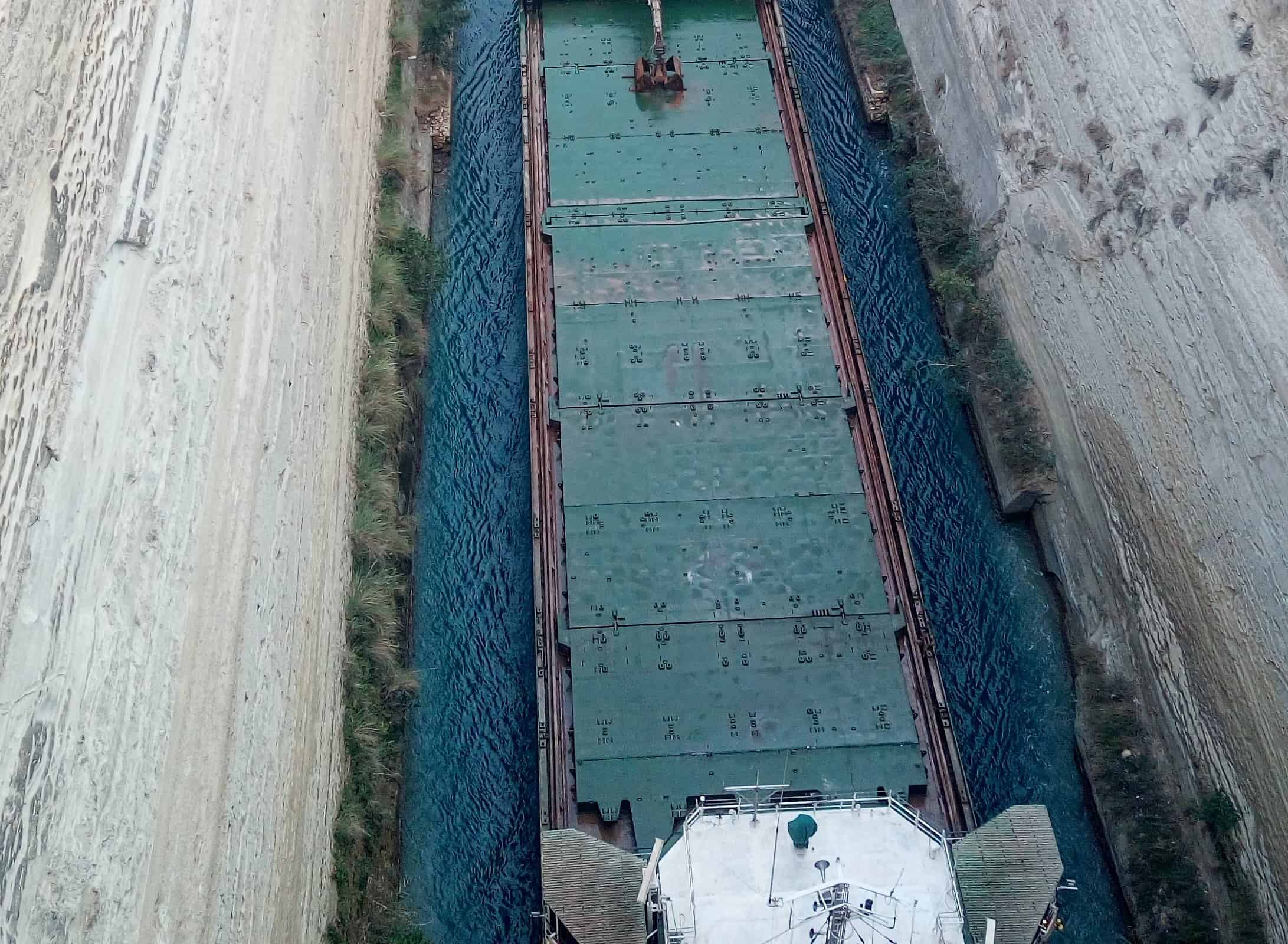
The idea of the Corinth Canal started with Emperor Nero, who actually began construction using 6,000 slaves, primarily consisting of Jewish prisoners of war. They had to smash approximately two miles of rock on the Corinthian Gulf.
©Elena Clotet/iStock via Getty Images
The idea of the Corinth Canal started with Emperor Nero, who actually began construction using 6,000 slaves, primarily consisting of Jewish prisoners of war. They had to smash approximately two miles of rock on the Corinthian Gulf. The slaves built between 130 to 160 feet wide trenches on either side, and some had to drill deep shafts to examine the quality of the rock. Unfortunately, Nero stopped construction just before his death to crush a rebellion. Under the Emperor’s rule, nearly a tenth of the total distance across the Isthmus was built.
The Modern Canal
While the modern canal is located on the original route, it took a long time to complete. After Nero’s death, the next time the canal was discussed was in 1687, by the Venetians who had just conquered the Peloponnese. However, nothing was done as it proved too daunting. However, after the fall of the Ottoman Empire in 1830, Ioannis Kapodistrias, the newly appointed Greek governor, brought up the idea of the canal again. But, yet again, construction was halted because the government refused to spend the estimated cost of 40 million gold Francs.
When Thrasyvoulos Zaimis became Prime Minister in 1869, he allowed the then General of Austria, Etienne Tyrr, to start construction. After all these years, the digging began in 1882. However, the company faced a financial crisis because the banks refused to loan them money due to the company constructing the Panama Canal declaring bankruptcy. As a result, construction was put on pause temporarily. But in 1890, a Greek entrepreneur invested five million Francs, which was the capital needed to continue construction. After all those years of misfortune, the Corinth Canal was finally built and officially opened on October 28, 1893.
How Wide is the Corinth Canal?
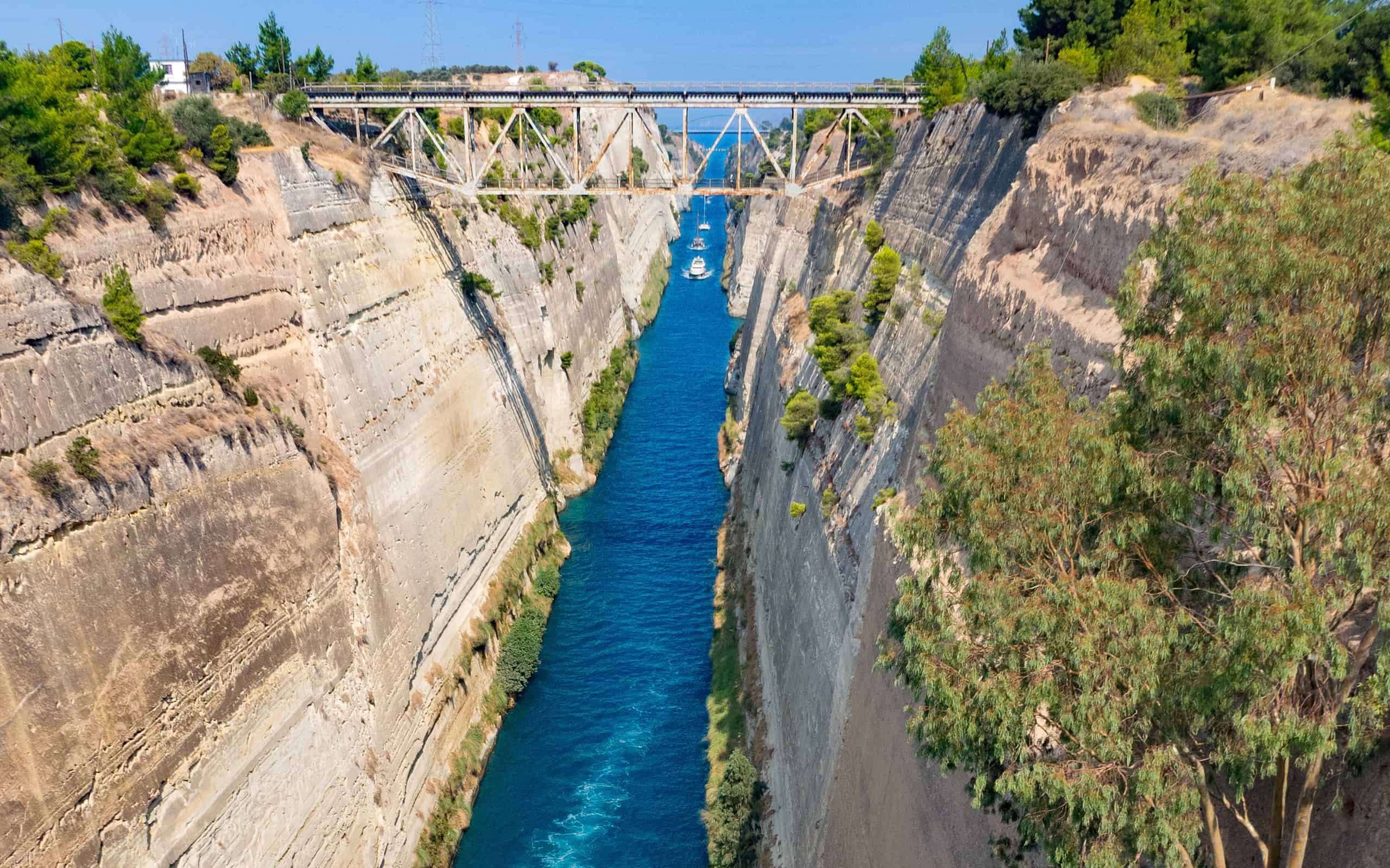
Some areas measure around 69 feet, while other parts are 62 feet wide. Furthermore, this canal is surrounded by 170-foot walls.
©Alika Obrazovskaya/iStock via Getty Images
Since this article already covered how deep the Corinth Canal is, let’s dive into how wide it is. Its width differs depending on the location. For example, some areas measure around 69 feet, while other parts are 62 feet wide. Furthermore, this canal is surrounded by 170-foot walls.
The Tides of the Corinth Canal
Because the Corinth Canal is so narrow, it makes navigation tricky. Furthermore, the strong tidal currents from both gulfs, the high walls, and the canal’s length also contribute to its challenging route.
What Animals Live in the Corinth Canal?
Many aquatic animals call the Corinth Canal and Gulf home, including:
Mediterranean Monk Seals
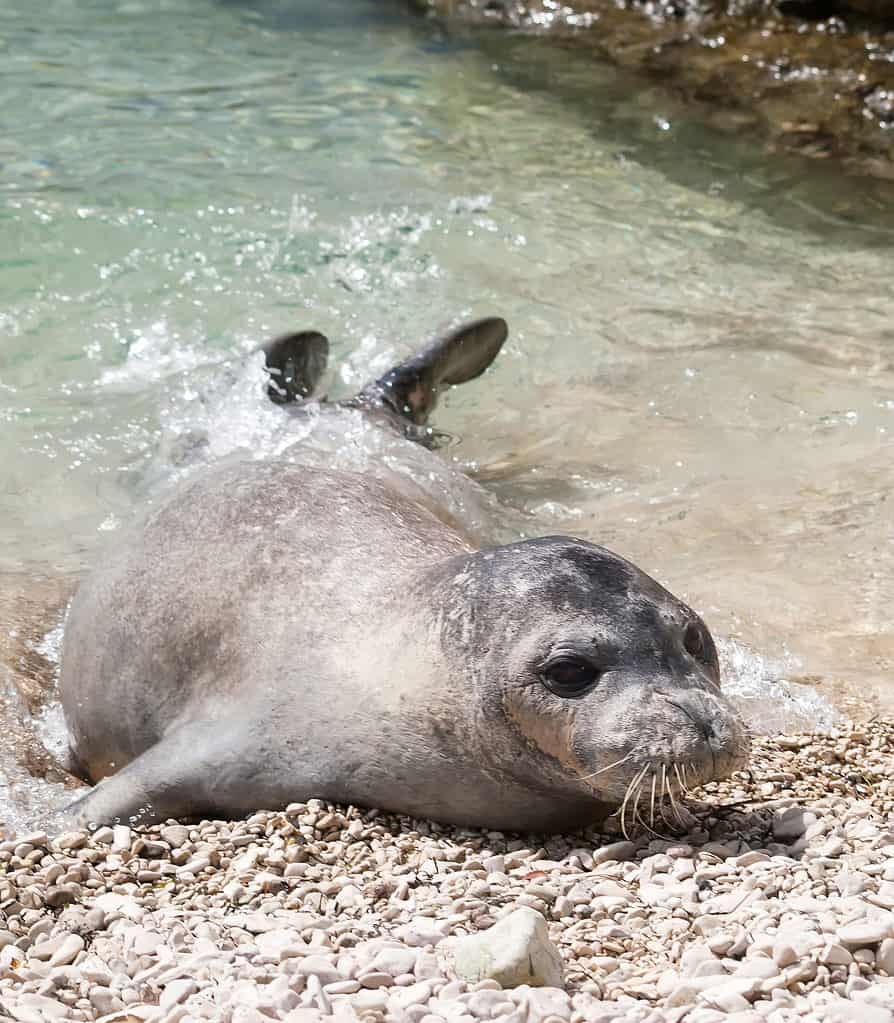
The Mediterranean monk seal occurs in the eastern Atlantic Ocean and the Mediterranean Sea, along Northwest Africa’s coast.
©iStock.com/sewer11
One of the rarest marine mammals in the world is the Mediterranean monk seal, and they occur in the Corinth Gulf. They are among the few pinniped species that thrive in tropical and subtropical waters. Unfortunately, there are only around 600 to 700 individuals left in the wild. Their most significant threats are humans killing them deliberately, habitat loss, displacement, and fisheries bycatch and entanglement. The Mediterranean monk seal occurs in the eastern Atlantic Ocean and the Mediterranean Sea, along Northwest Africa’s coast.
Striped Dolphins
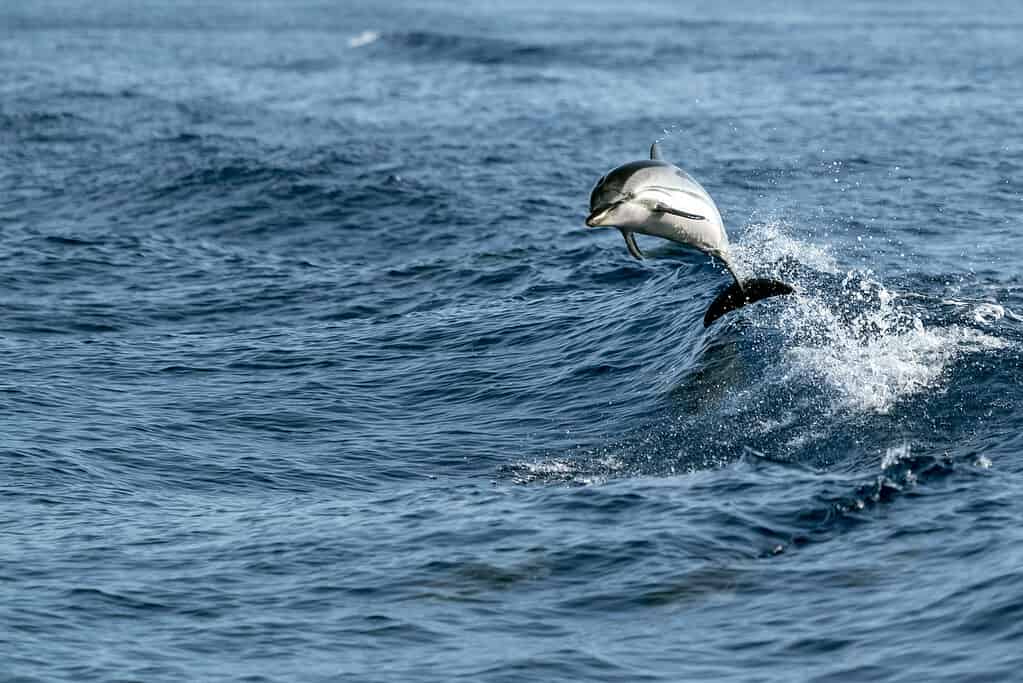
Striped dolphins typically live in tight, cohesive groups of around 25 to 100 individuals. They often jump, breach, and leap over 20 feet above the surface.
©izanbar/iStock via Getty Images
Striped dolphins are one of the world’s most widespread and common dolphin species. These dolphins prefer tropical to warm oceanic waters and usually inhabit upwell areas with cold, nutrient-rich water. Striped dolphins typically live in tight, cohesive groups of around 25 to 100 individuals. They often jump, breach, and leap over 20 feet above the surface.
Loggerhead Turtles

Loggerheads occur throughout the world, but they are mainly found in subtropical and temperate waters of the Pacific, Atlantic, and Indian Oceans, as well as the Mediterranean Sea.
These turtles derived their names from their large heads that support powerful jaws, enabling them to feed on prey with hard shells, like conch and whelks. Loggerheads occur throughout the world, but they are mainly found in subtropical and temperate waters of the Pacific, Atlantic, and Indian Oceans, as well as the Mediterranean Sea.
Basking Sharks

These sharks can grow to 40 feet long and closely resemble predatory sharks. While they may look scary, they are harmless. Basking sharks are one of the only species that can thrive in temperate conditions.
©Martin Prochazkacz/Shutterstock.com
The title of the second largest fish in the world goes to basking sharks. However, you should not be intimidated by their size. Like the largest animal on earth, the blue whale, basking sharks are filter feeders, only eating tiny planktonic prey. These sharks can grow to 40 feet long and closely resemble predatory sharks. While they may look scary, they are harmless. Basking sharks are one of the only species that can thrive in temperate conditions.
Eurasian Otters
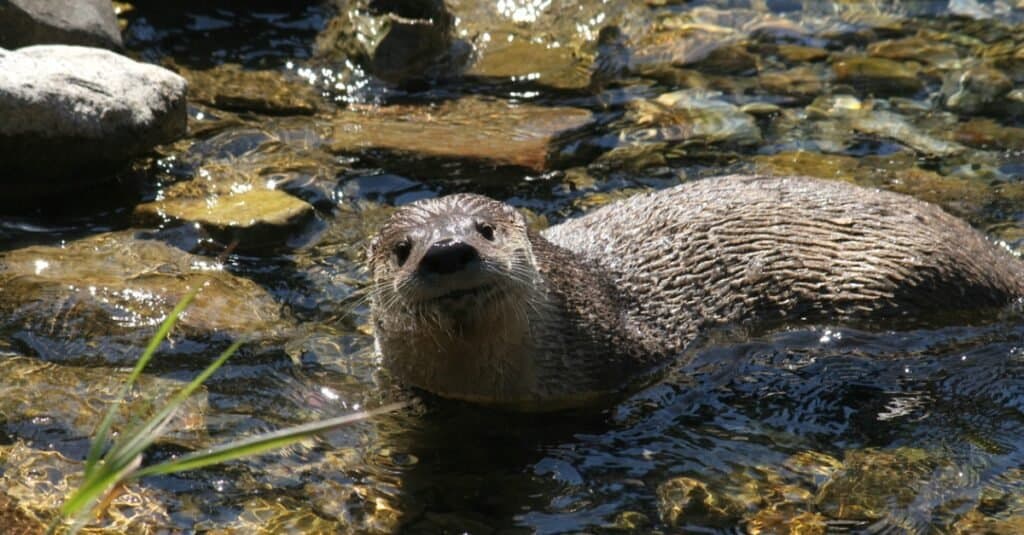
These otters are mainly spotted at night because they are nocturnal. Eurasian otters occur in freshwater environments, but their population is severely declining.
©iStock.com/MarcQuebec
These otters have one of the widest distributions from China to Ireland and down to Southeast Asia. Unfortunately, populations of the Eurasian otter are declining in many countries where they are not protected. These playful critters have a varied diet of:
- Fish
- Crustaceans
- Amphibians
- Reptiles
- Birds
- Eggs
- Insects
- Worms
These otters are mainly spotted at night because they are nocturnal. Eurasian otters occur in freshwater environments, but their population is severely declining.
Thank you for reading! Have some feedback for us? Contact the AZ Animals editorial team.

